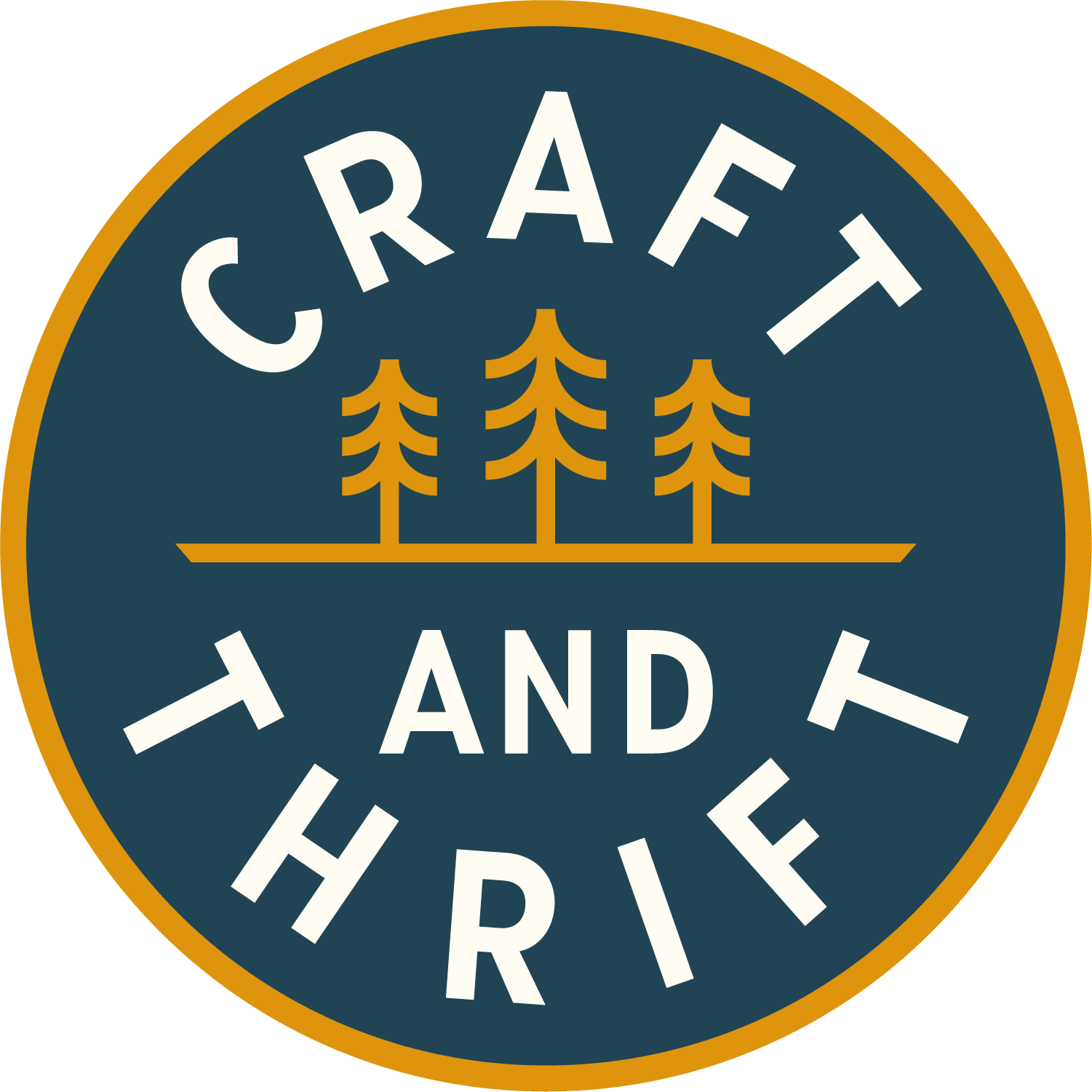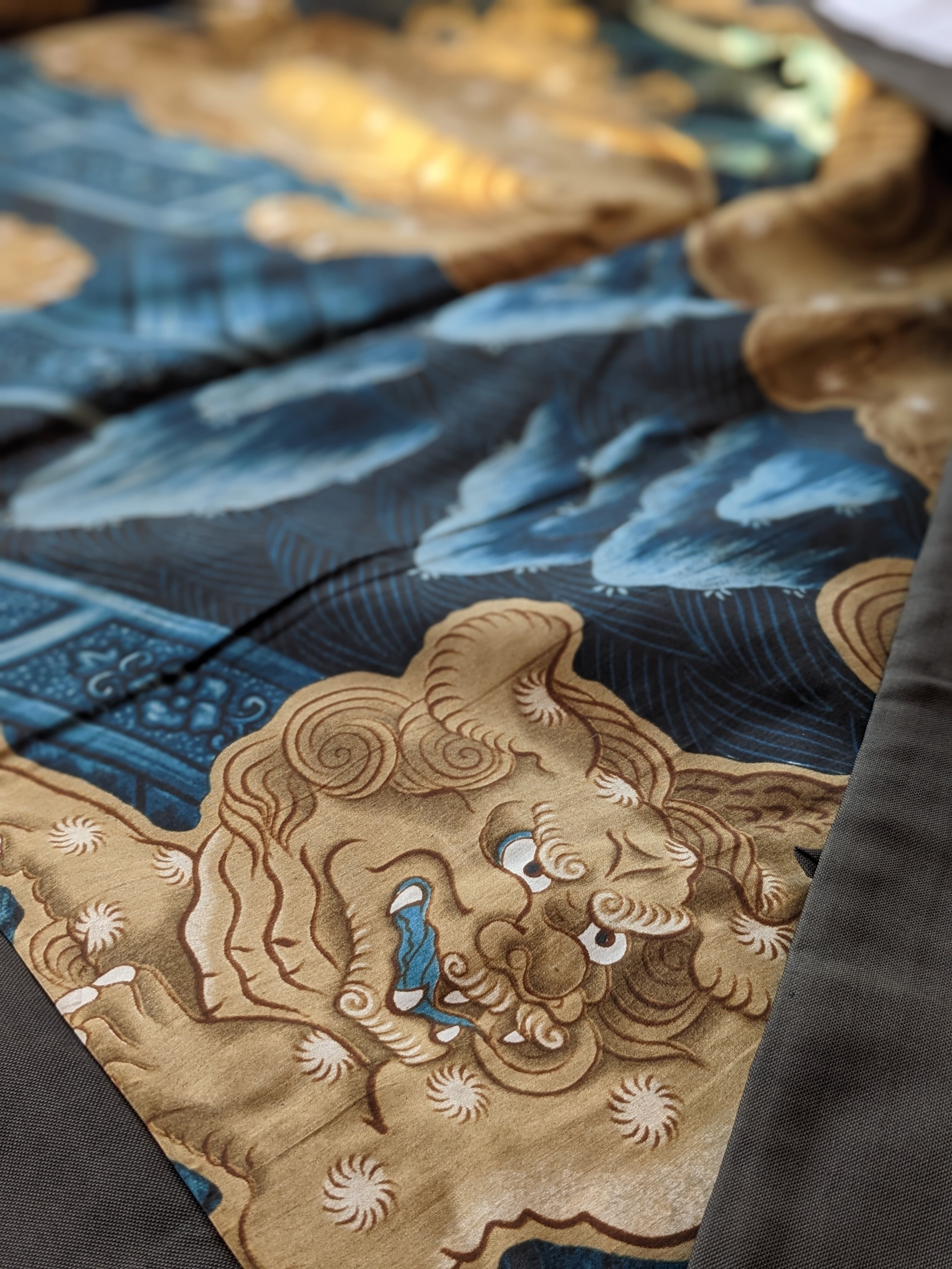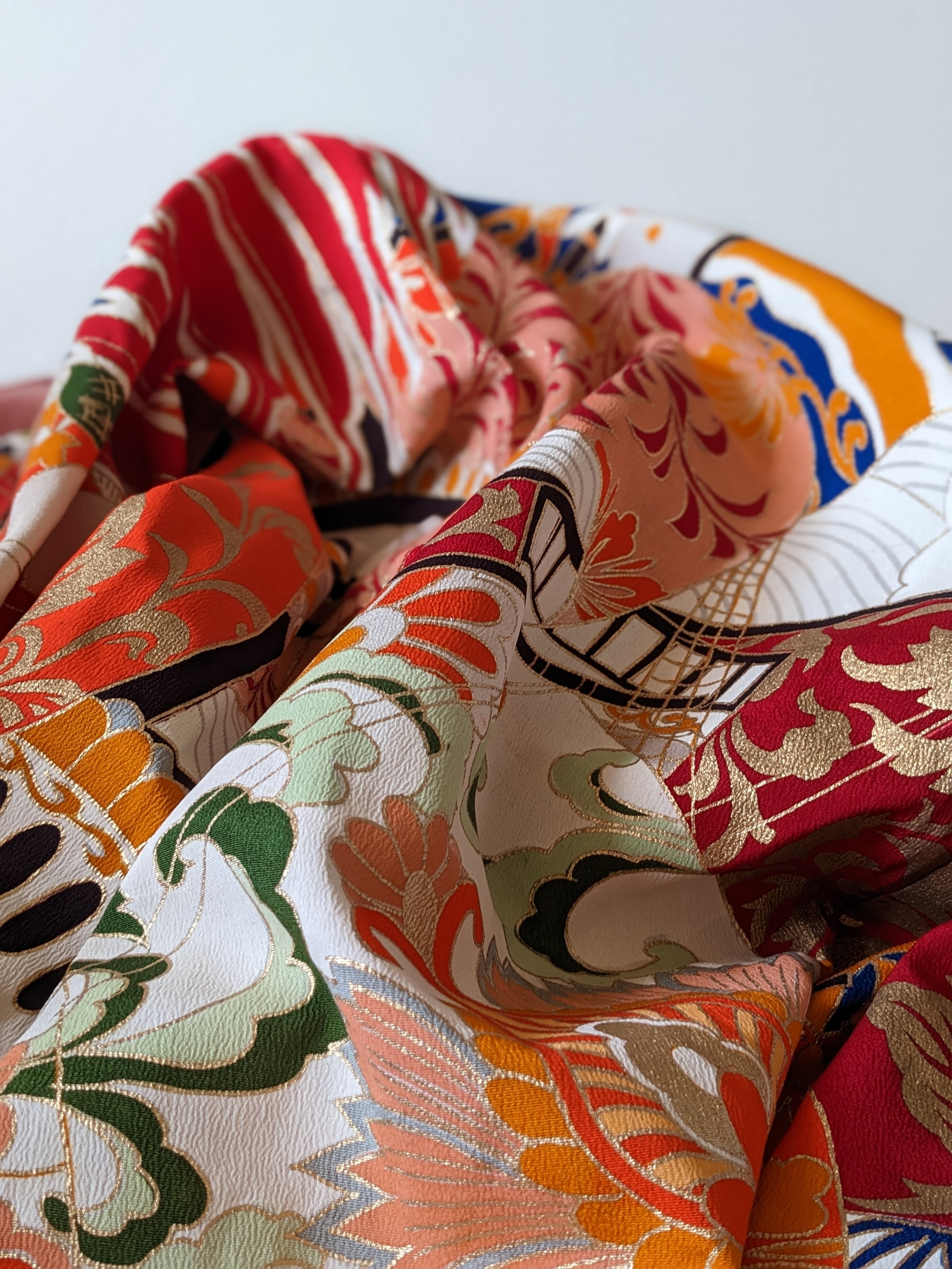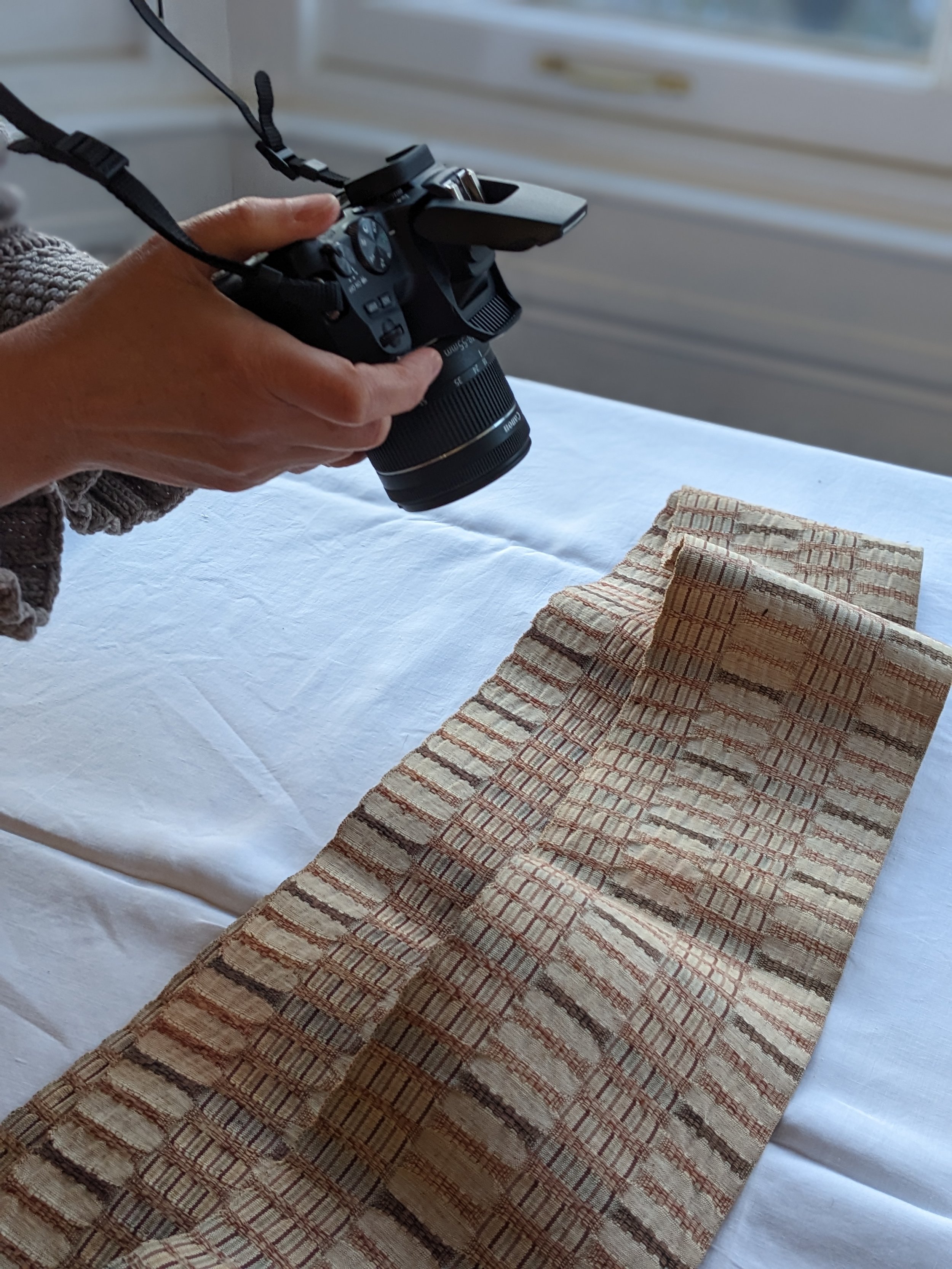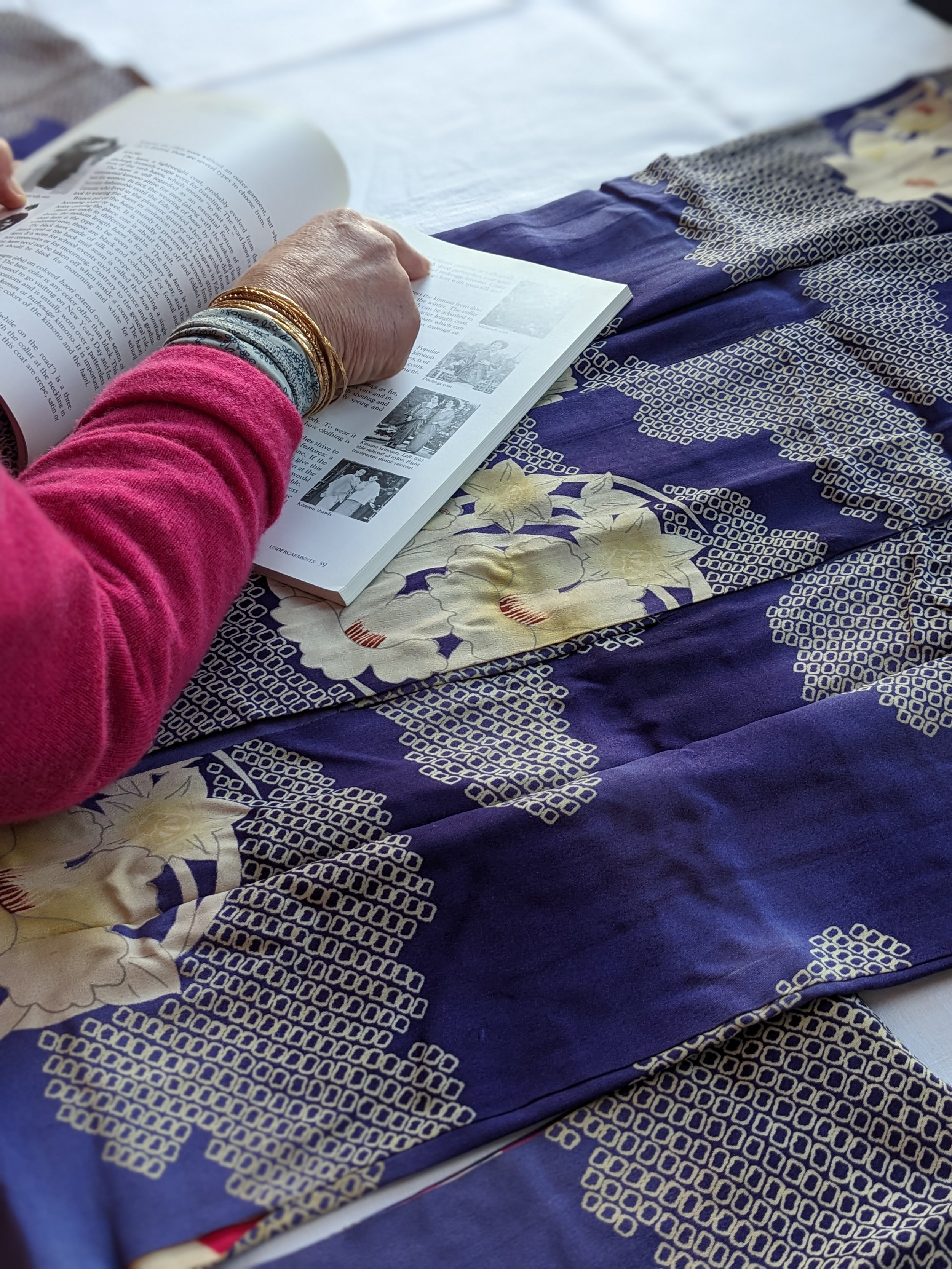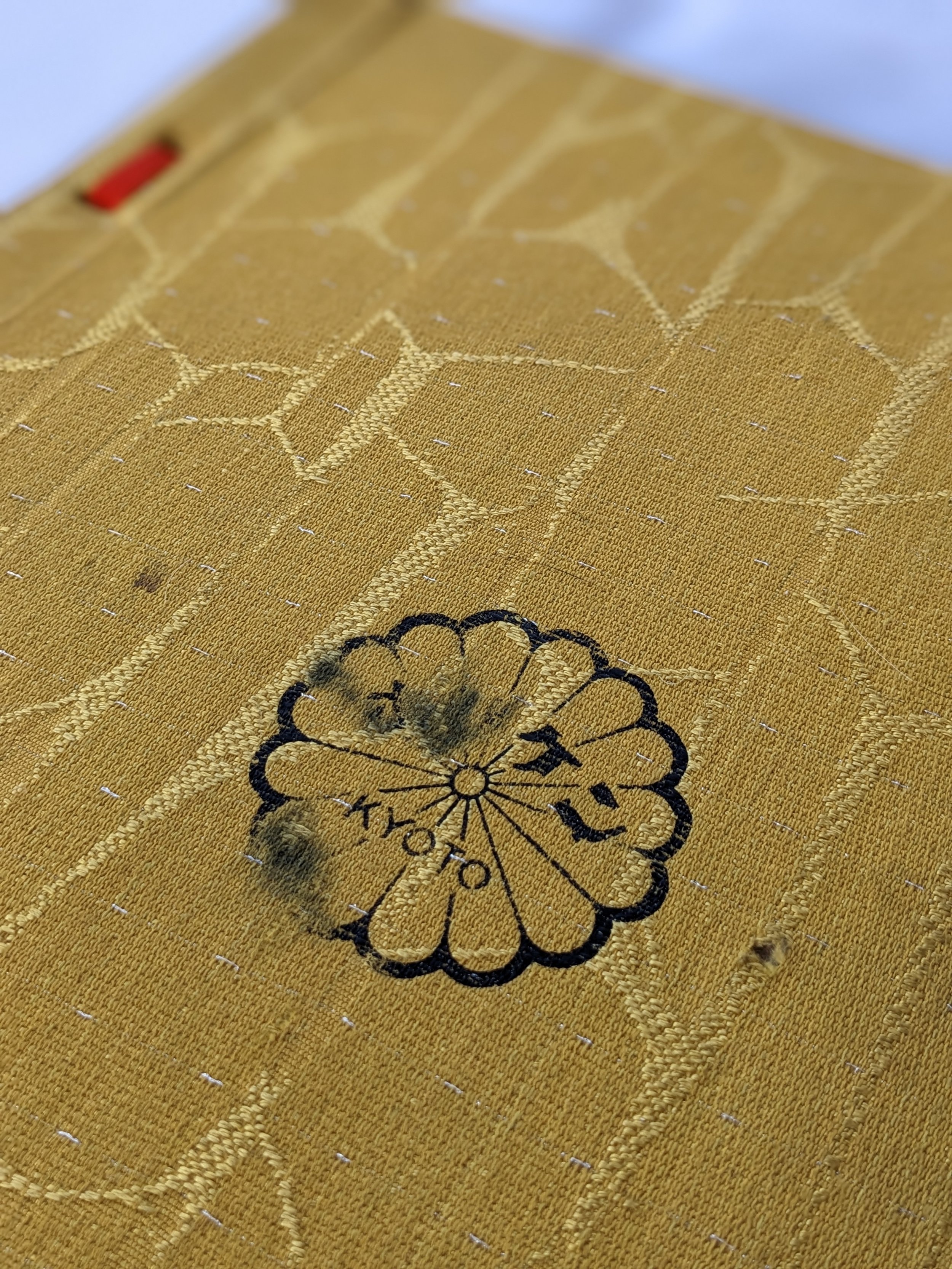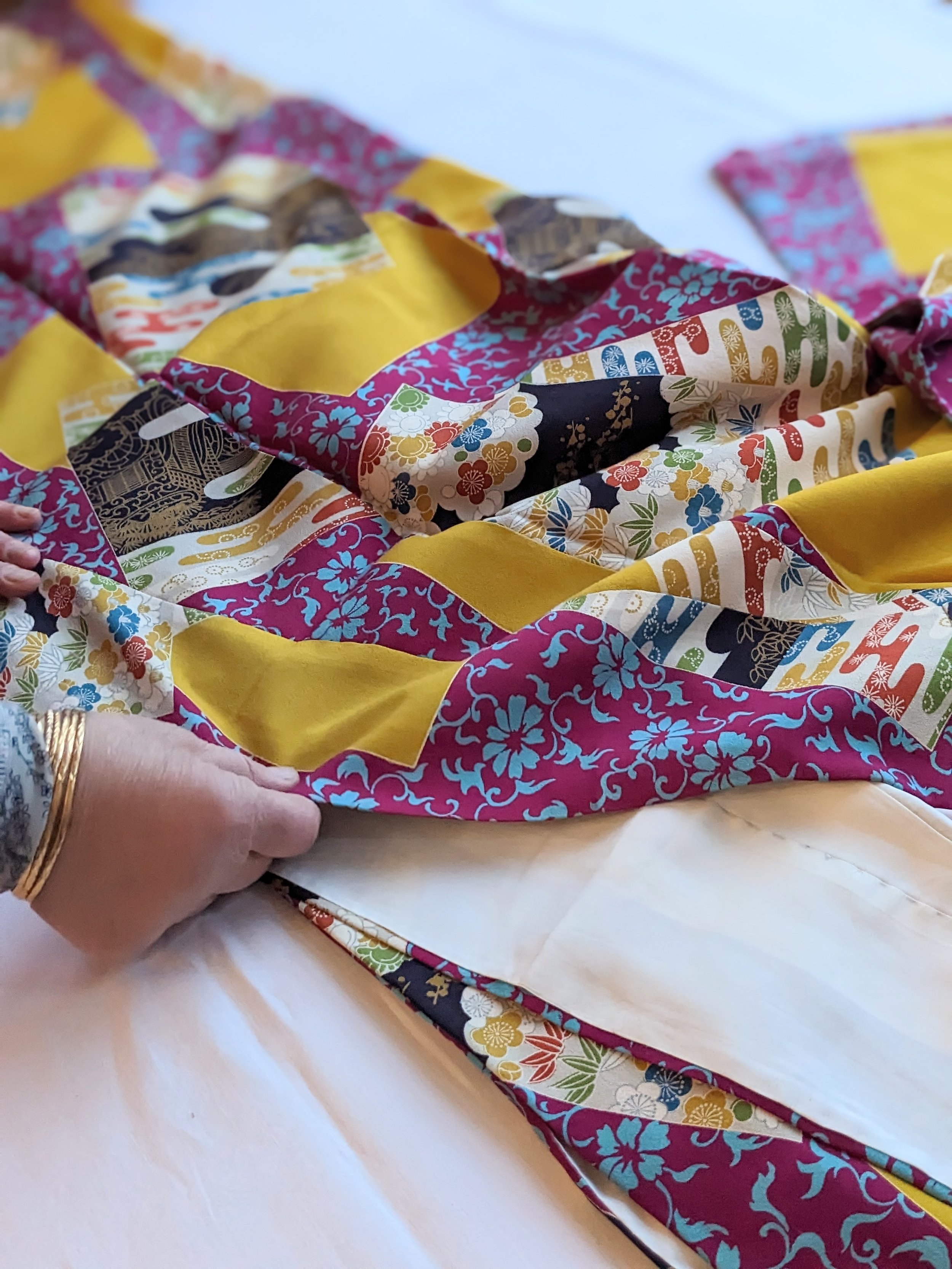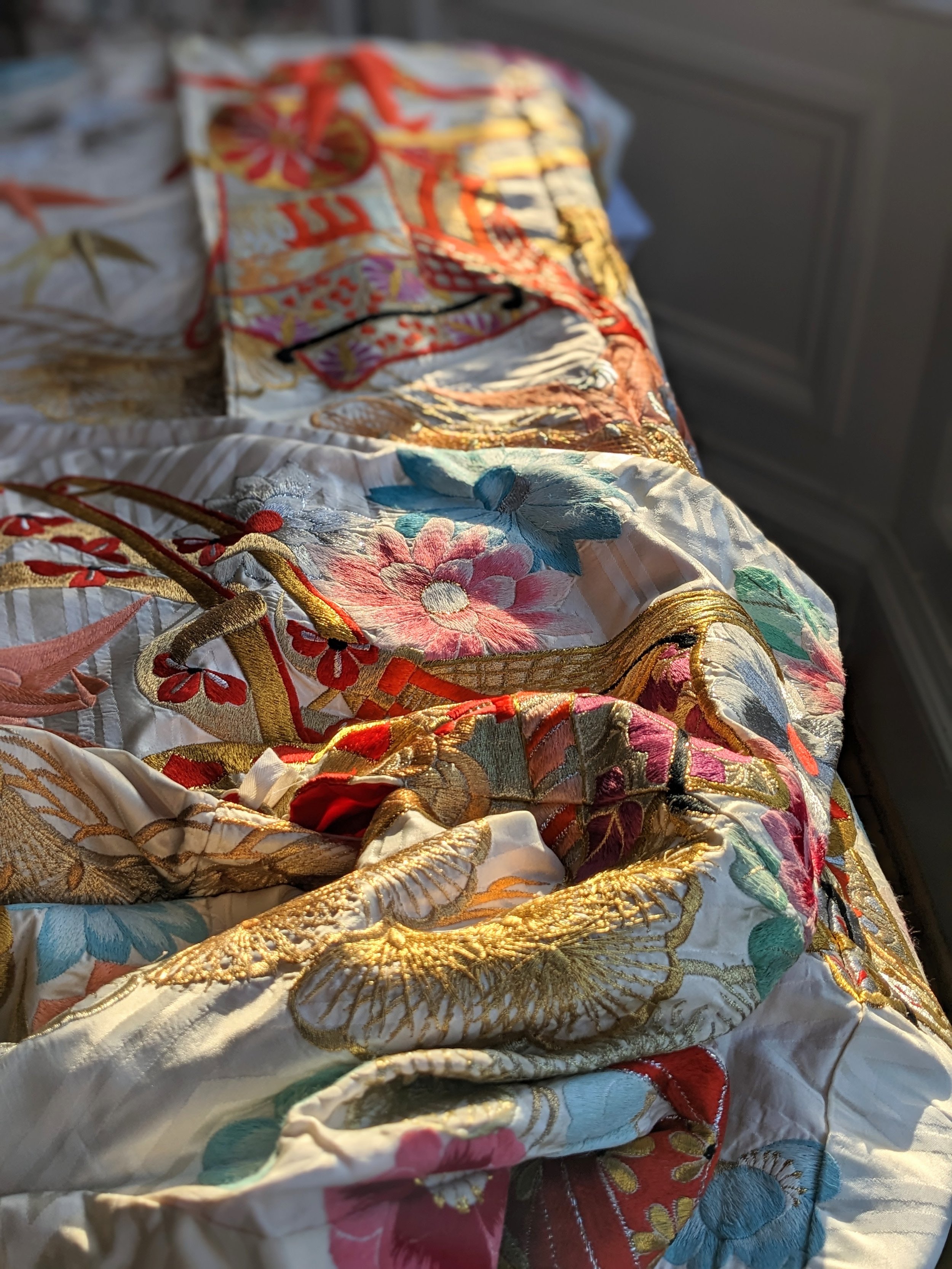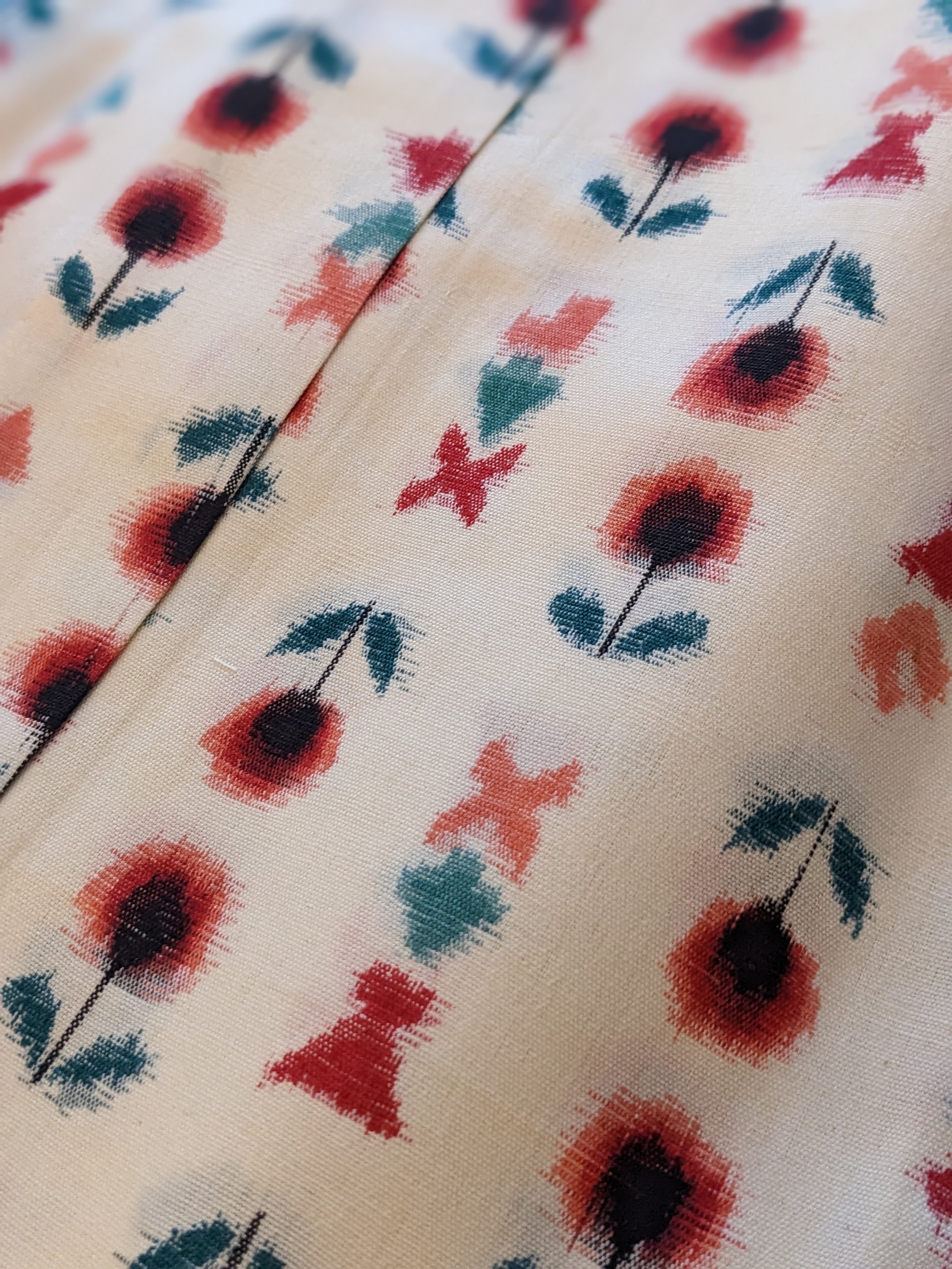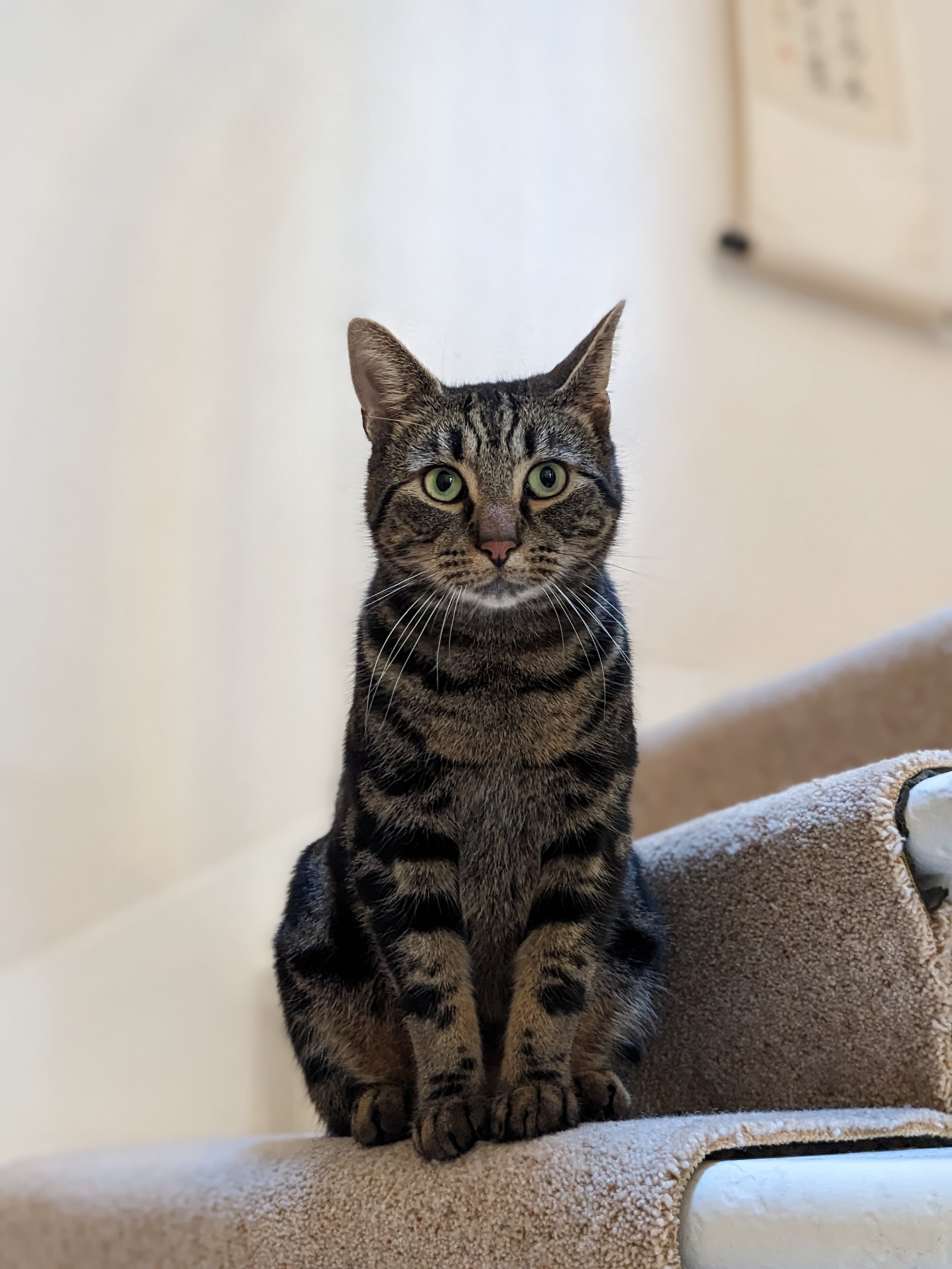A collection of vintage kimono
My pal Moira, of allotment share fame, used to live in Japan in the 1980s. She taught at a university and whilst she was there, she amassed a collection of vintage kimono. Some of them were beautiful, iconic pieces designed for special occasions, like wedding dresses and formal wear. Others were day-to-day items, designed to be worn round the house or to the office. There were kimono meant for kids, adorned with cute animals and fairy tale characters. There were silk kimono, cotton kimono, kimono with specialist dyes and fabric finishing techniques. It was an incredible collection, amassed over many years by someone with a real passion for Japanese culture and heritage, and an appreciation of beautiful fabric.
When Moira and I started hanging out, we discussed at length her plans for this collection. Although it had brought her a lot of joy over the years, the weight of responsibility for this set of beautiful cultural objects was beginning to cause her some anxiety, not to mention the space they required for storage. Each kimono was carefully wrapped in archival paper and labelled with any information Moira had on the design or fabric. They were then meticulously folded and diligently stored in water tight plastic boxes. Old Edinburgh houses can be bad for damp ingress, and mould would be devastating to this delicate fabric. Not only were they personal to her, but some of them were unique or rare artifacts in their own right. Moira had been very kindly bestowing them on friends and family over the years, plus using some for herself, but ultimately there were more than one person could sensibly use in one lifetime. She had considered trying to sell them, or donating them to people who would make use of the fabric. Ultimately, she wanted them to be appreciated by whomever came next.
We discussed contacting various universities and colleges, specialising in Japanese culture, or textile design. It felt right the collection go to an institution that could make use of them for education or research. Such a large set of examples of a nation’s heritage, should be used for the public good and preserved for future generations. After a few false starts, emailing various teaching facilities who either ghosted us or weren’t able to accommodate such a large collection, we struck gold with the Museum of Scotland.
They sent two archivists round to Moira’s house, on a cold wintery day in January. They took many, many photos, and even more notes. Moira kindly invited me to attend, so I brought cups of tea to the guests, and sat quietly observing the process. The archivists seemed very excited by the collection, and very keen to acquire it for the Museum. I was unaware of the complexity of the process for a museum to acquire an item or collection of objects. Forms to be filled, questions to be asked about provenance, applications to be submitted to committees that only meet monthly. The process was long; no Indiana Jones-style cultural pillage grab-and-runs in this day and age. It makes sense, not only do the museum need to be sure they’re not acquiring stolen goods or similar, they need to ensure they have the right space and conditions in which to store the items.
It took around 9 months, but eventually the Museum sent a van and some professionals to wrap and move the bulk of the collection to it’s new home, in the Museum of Scotland storage facility. Moira will apparently be informed if items from the collection are used in future exhibits, but in the meantime the kimono will be made available to researchers, academics, and students. Future generations will benefit from Moira’s incredible generosity and the kimono will be preserved for many years to come. What an incredible legacy!
I’ve included a selection of additional photos below, and if you view this post in my substack, there’s also a short video roundup of some clippies I shot of the collection. Moira also very kindly gifted me some kimono and fabric, I’m planning on talking about these in a separate post so watch this space.
